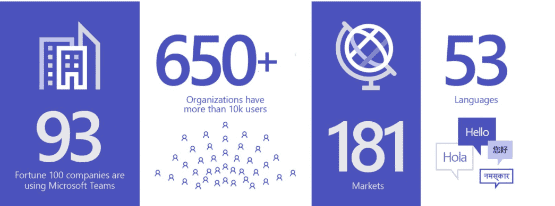From my personal experience, I can say that the pandemic has truly changed what working from home looks like in 2023. On top of this, from a business perspective, hybrid and multi-locational teams management has also dramatically changed since 2020.
The challenges of managing multi-locational teams
At home, especially during school holidays, I frequently found myself sitting across the table from my wife whilst my 2 boys (11 and 14) charged around the house winding each other up instead of peacefully playing football in the garden. Oh, and add in a rather energetic dog that needed a lot of exercise and you have the classic working from home madhouse.
With this in mind, it was rather challenging to get into the zone and maintain the usual levels of productivity. Many other professionals were in the same boat, and therefore monitoring and supporting workers in a hybrid or WFH setup was never more important.
That aside and moving on to the topic in hand, having the tools in place to work from home is now, dare I say it, relatively easy if the technology infrastructure is in place to support it. Unified Communication platforms can be rapidly deployed (If not already in place) to enable a remote workforce.
The Preferred Collaboration Platform For Businesses: MS Teams
It certainly appears that MS Teams for Business is the main collaboration platform of choice for many organizations. Microsoft announced on the 18th of March 2020 that the number of Daily Active Users (DAU) hit 44 million – an increase of 12 million in just over a week from the start of the Covid 19 pandemic.
For 2022, they announced that the total number of Teams users throughout the year had risen was an impressive 270 million.

The Challenges of Maintaining Business Continuity in a Hybrid Set-up
Once Teams for Business is in place, further challenges are presented around how to maintain a level of business continuity. It is essential that organizations have visibility of the connected workforce and that’s where monitoring and reporting really come into their own. Largely it comes down to common sense…for those who know me, watch out, this is where I drop in sayings such as ‘You can’t manage what you can’t measure’ and questions like ‘Would you drive a car without a dashboard?’
Part of the issue with working from home is that it doesn’t fundamentally change human psychology. If you are an unproductive person in the office, then it’s unlikely you will change when you work from home. If anything this can get worse with plenty of other distractions, whether it’s the TV, household chores, or the half-eaten cheesecake in the fridge.
Key questions an organization needs to consider to support employee productivity in a hybrid/ working from home environment:
What does your organization need visibility of to maintain business performance?
Insights to productivity levels is key:
- Are Voice, Video, IM and Conference volumes at an acceptable level?
- Call handling – is this at an acceptable level? Are customers being serviced within SLA timeframes?
- Call routing – are inbound calls being distributed correctly?
- Is the technology being used to replace traditional ways of working such as video conferencing replacing face-to-face meetings?
Call quality to ensure excellent collaboration and customer experience:
- Is the home Wi-Fi causing call degradation?
- Are employees using the approved headsets they were given or borrowing the gaming headsets from their children?
- Is the technology infrastructure coping with the increased volumes of use of the UC platform?
If you’re looking for a tool to help you monitor the above the most efficient ways possible, explore our dedicated Microsoft Teams reporting Software and voice recorder for Microsoft Teams
Who needs access to user-specific Microsoft Teams data?
It is no longer just the responsibility of the IT admins to monitor and report on MS Teams usage. Yes, they do need visibility to call quality and related areas, but it is very much a requirement for the heads of business to be able to view their staff’s productivity levels. Whichever reporting solution is used, it is essential that quick and easy access to relevant information is made available.
Factors you must take into consideration for an efficient hybrid team management:
- Quick and easy installation – time is not really something anyone has at the moment so an installation taking hours is preferable to one taking days or even weeks.
- Restricted access to data – as a reporting tool is required across an entire organization, restrictions need to be applied to ensure users only have access to relevant data and user details.
- Access to multiple data sources – in many cases, organizations may use multiple UC platforms so visibility across multiple platforms from a single reporting tool can be very insightful.
And finally, on to Clobba the reporting and analytics solution for Teams, and other UC Platforms. Here’s a few of the key features:
- Installed in hours, delivered either from our cloud, in customer cloud or on-prem
- Simple to use search-based reporting
- User definable automated reports and dashboards
- Security policies restricting access according to a user’s profile with support for Microsoft Single Sign On
- Visibility of employee productivity, call quality (dependent on UC platform), device usage (headsets), user adoption, call costs and SIP trunk capacity.
- Voice recording available for Teams on-prem.
- DID range management module to view and manage multiple DID ranges
- Teams module which looks at the collaboration and general usage of Teams
- Support for multiple platforms including Teams, Cisco ACUM, Avaya, Ribbon (SBC’s), Audiocodes (SBC’s) and IPC and Speakerbus dealerboards.
We can get a 30-day PoC up and running very quickly so if you or your customers need some help with a remote workforce let us know and we will be pleased to help.
Mark



